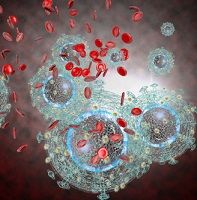Article
Exposure to Violence Raises Kids' HIV Viral Loads
Author(s):
Children with perinatal HIV who have been exposed to violence, or whose caregivers have been assaulted as adults, appear to have higher unsuppressed viral loads and lower CD4 levels compared with kids without violence exposure.

Children with perinatal HIV who have been exposed to violence, or whose caregivers have been assaulted as adults, appear to have higher unsuppressed viral loads and lower CD4 levels compared with kids without violence exposure.
In a study published online ahead of print in the Journal of Adolescent Health, Harvard School of Public Health researchers Evaluated associations between youth and caregiver exposure to violence with unsuppressed viral load in HIV infection, defined as HIV RNA load greater than 400 copies/mL and a CD4 level less than 25 percent among 268 participants with HIV, ages 8 to 15 years, in the Pediatric HIV/AIDS Cohort Study Adolescent Master Protocol.
The team, led by Deborah Kacanek, Sc.D., a research scientist at Harvard’s Center for Biostatistics in AIDS Research in Boston, collected information from annual examinations, record abstractions, and interview data including reports of recent exposure to violence, as well as self-reports from caregivers on whether they had been assaulted or abused in adulthood. They also controlled for socioeconomic characteristics.
They found that 34 percent of the pediatric participants had been exposed to violence in the past year and 30 percent had a caregiver who reported being assaulted as an adult. At the same time, 24 percent of the kids had an unsuppressed viral load and 22 percent had a CD4% less than 25 percent. Overall, they discovered that kids who had been exposed to violence had comparatively higher viral loads; furthermore, those who had indirect exposure because their caregiver had been exposed did unsuppressed viral loads and lower CD4 percentage.
The authors concluded that there is a high prevalence of exposure to violence among kids and teens with HIV, which is associated with poor virologic and immunologic outcomes.
“Reducing violence and providing support to youth with violence exposure and PHIV may improve health outcomes,” the authors wrote.
2 Commerce Drive
Cranbury, NJ 08512
All rights reserved.





